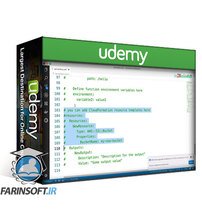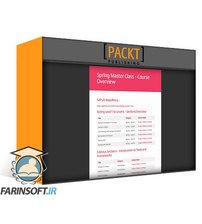در حال حاضر محصولی در سبد خرید شما وجود ندارد.

GCP ACE - Google Cloud Associate Cloud Engineer certification. Begin your Google Cloud Platform - GCP journey!
در این روش نیاز به افزودن محصول به سبد خرید و تکمیل اطلاعات نیست و شما پس از وارد کردن ایمیل خود و طی کردن مراحل پرداخت لینک های دریافت محصولات را در ایمیل خود دریافت خواهید کرد.


Serverless برای مبتدیان: یادگیری AWS Lambda و توابع Azure

آموزش کدنویسی وب سرویس ها با زبان Java Spring Boot
![[NEW] Python Bootcamp: Master Python Programming in 2024](https://farinmedia.ir/farinmedia-img/https://farinmedia.ir/farinmedia-img/images-123/27719.jpgmain-resized.jpg)
[NEW] Python Bootcamp: Master Python Programming in 2024

راهنمای مصاحبه گرفتن شغلی در زمینه AWS

Docker in AWS – Deploy Java Spring Boot to AWS Fargate & ECS

Docker for Beginners: DevOps for Java & Spring Boot

Generative AI with ChatGPT and OpenAI API

یادگیری کامل Microsoft Azure Data و آماده شدن برای آزمون بین المللی DP-900 در یک آخر هفته

Master Java Web Services and REST API with Spring Boot

Generative AI with Google – Bard, PaLM API and Google Cloud